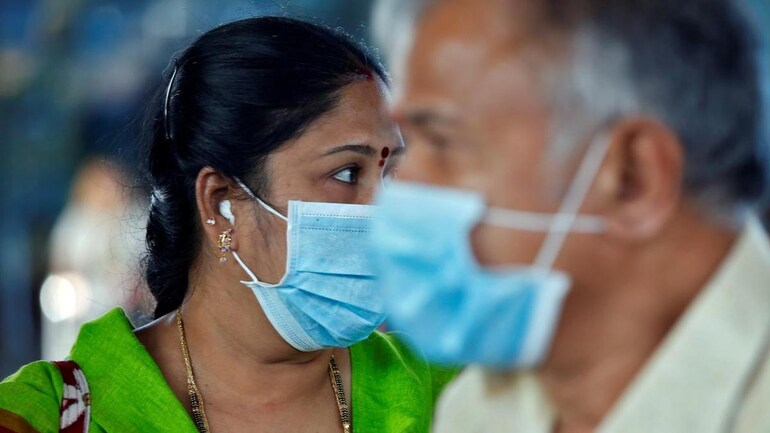The reported weekly average of cases in Kerala was 10,319 on April 18 and 12,633 on July 8. (File representative image)
On January 27th last year, Kerala registered patient zero of the new coronavirus in India. The state had no active case by the end of next month.
But after Covid-19 was declared a pandemic less than two weeks later. The disease also swept across India and Kerala was no exception in capturing a number of infections. But soon the state stood out worldwide as the WHO celebrated its success in responding effectively to Covid-19. “This (Kerala) template could serve as a great example for other countries,” said Payden, WHO’s acting representative in India, in July 2020.
SECOND WAVE REFUSES EBB IN KERALA
Fast forward to July 2021: now that the rest of the country is seeing a recovery from the pandemic, Kerala is still waiting for the second wave to cool off. The State 31.7 percent of daily cases reported and 15.6 percent of the daily deaths in the country on July 8th.
The weekly average of reported cases in the state rose to over 10,000 on April 18 and has never dropped below 10,000 since then.
Dr. Sulphi Noohu (Central Working Committee member, Kerala IMA) explains why cases are not coming #Kerala
Clock #News today With @sardesairajdeep LIVING # Covid19 #Coronavirus pic.twitter.com/ukn9COLEzO– IndiaToday (@IndiaToday) July 9, 2021
The reported weekly average of cases in Kerala was 10,319 on April 18 and 12,633 on July 8. In the same period, however, the weekly average of reported cases at the national level fell significantly from 2.2 lakh to 42,080.
On the flip side, the weekly average of deaths in Kerala rose from 21 to 127 since April 18, while in India it fell from 1,226 to 803 at the same time.
The surge came a month after the state appeared to have apparently again managed to cut the daily number of cases – it was around 1,054 by mid-March this year with a test positive rate of 2.54 percent.
But on May 12, Kerala reported a TPR of 29.75 percent. And on July 8, the state’s median 7-day TPR was 10.41 percent.
However, from a high of 22.77 percent on May 9, the weekly average test positive rate across the country fell to 2.32 percent on July 8.
DENSITY, HIGH MOBILITY, HIGH TESTS
“Kerala’s enormous population density and high mobility of the population are also a major reason why cases remain high. Kerala is like a huge city through and through and people interact with each other very often. The high percentage of the vulnerable population is also an important factor, “explains Dr. Sulphi Nooh, a member of the Indian Medical Association’s Central Working Committee.
Dr. Rajeev Jayadevan, a member of the state task force on Covid-19, says TPRs don’t always have to be a direct indicator of the spread of the virus. The medical infrastructure and its exposure are a better marker, he says.

“Targeted testing and easy access to testing facilities such as those available in Kerala can be a reason for a high TPR in Kerala. Another important factor in assessing the impact of the pandemic is medical infrastructure. There has been a shortage of intensive care beds for both Covid and non-Covid cases, suggesting the situation is under control. “
Given the high case numbers in the state, tests have also increased in Kerala, while in India they have decreased overall in recent days.
ALSO READ | R-value red flags of potential Covid-19 surge in Maharashtra, Delhi, Kerala
After 1.15 lakh samples were tested weekly a week ago, the state will now test 1.21 lakh samples on a weekly average from July 8th.
At the national level, however, the tests have decreased slightly from 20.8 lakh samples a week ago to 18.2 lakh now, as a weekly average over the same period.
A CONTROLLED EXPLOSION?

The country’s health department describes the situation as a controlled explosion.
“It is always better to have a medium or smaller peak that extends over a long period of time rather than having large peaks for shorter periods of time. More time gives the health infrastructure the opportunity to intervene and provide essential support, ”said Dr. Amar Fettel. , Kerala’s Communicable Disease Focal Point Officer.

HIGH VACCINATION RATE
Even if cases remain higher, the state appears to have kept pace with vaccination. As on Thursday, Kerala vaccinated 11,179,953 people with at least one dose. That’s 31.50 percent of the country’s total population.
Worrying R value
One of the critical parameters to get the transfer rate under control is the reproduction number, the so-called R-value.

The number signifies the spread of a contagious disease. An R number of one means that on average one patient infects another person. But when the number exceeds one, even by a fraction, the infection can turn into a snowball. An R value below one means that the outbreak may eventually subside.
The Effective Reproduction Number or R-Value of Kerala is worrying.
Flattened curve or peak still coming? Dr. Anish TS (Covid19 Kerala Expert Committee) shares his views
Clock #News today With @sardesairajdeep LIVING # Covid19 #Coronavirus #Kerala pic.twitter.com/Ox7B5NMvHX– IndiaToday (@IndiaToday) July 9, 2021
According to the model developed by a team of researchers at the Center for Precision Health Data Science at the University of Michigan under the direction of Prof. Bhramar Mukherjee, the effective reproduction number is 0.88 for India and 1.05 for Kerala from 7. July available.


إرسال تعليق